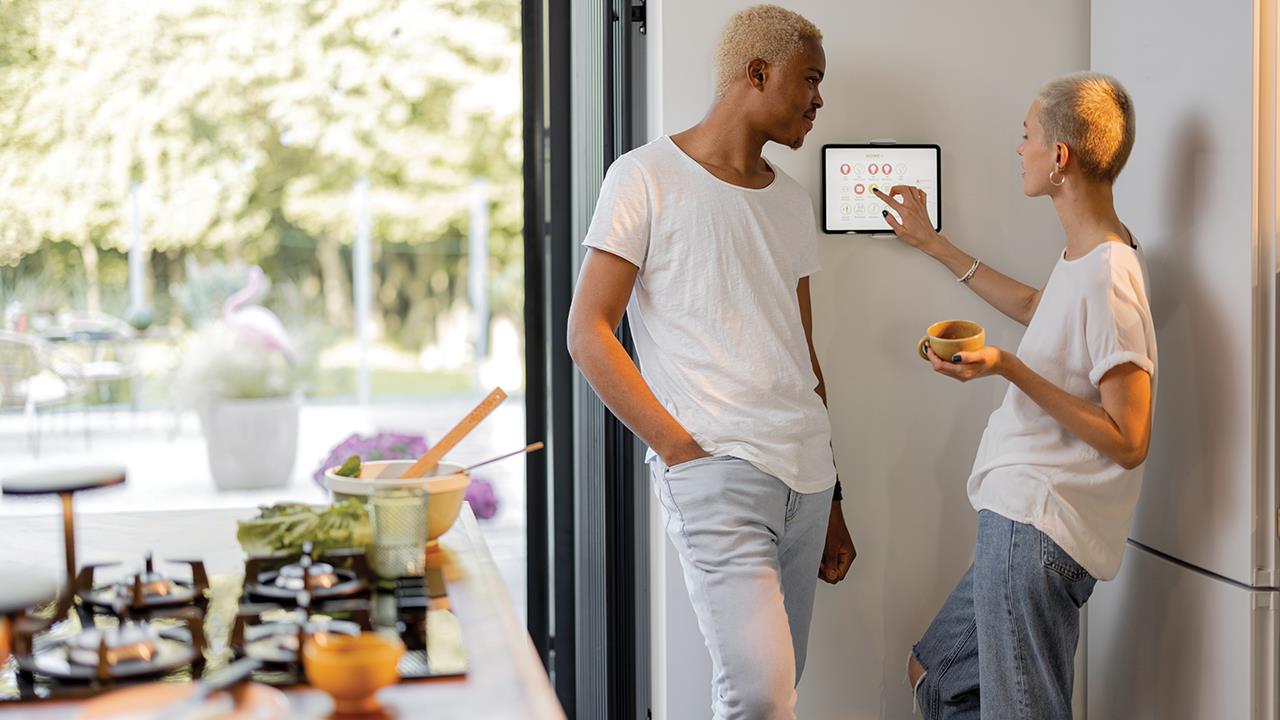

With the rise in energy prices and work from home culture, homeowners require more intelligent heating controls to minimise utility costs. While there is increased expense associated with smart control upgrades, the long term energy savings can make them a logical investment for end-users.
In a wider context, the enhanced efficiency measures provided by these applications will have a part to play in decarbonising homes and bringing the UK closer to its net-zero targets. For the newbuild market in particular, the Future Homes Standard from 2025 means developments must be equipped to meet more stringent energy efficiency requirements.
Among heating controls, thermostatic radiator valves (TRVs) are a common component. TRVs attach directly to the top or bottom of radiators, allowing temperature control across individual rooms. This is increasingly important to consumers, as working from home sees individuals more often than not spending long periods of time in a single room. TRVs therefore offer a simple and inexpensive way to manage heating in line with occupant requirements. Yet, it must be kept in mind that TRVs are dependent on setting by the homeowner, which is a manual operation.
Smarter heating
This is where smart technology can further enhance energy saving benefits and user ease. Smart thermostats and TRVs are the most advanced type of heating controls currently available. These are internet-enabled devices that allow management, scheduling, and adjustment of heating and hot water remotely, via mobile apps or web browsers. There has been an increase in sales of these devices, with many consumers appreciating the control of their home via their mobile phone.
As part of their intelligent precision, smart thermostats can work out how long it takes the home to reach a chosen temperature and time the heating system to work as efficiently as possible. These systems also apply geolocation technology to turn the heating on or off based on whether there is anyone at home, using sensors in the home or by tracking the user’s whereabouts through their phone.
In tandem, these controls provide optimal energy savings as smart thermostats allow for rapid reaction time in smart TRVs when a temperature change is detected. Having both applications in place dramatically reduces the time required for heat adjustment and subsequently enhances the accuracy of set-temperature maintenance.
Raising SAP standards
As mentioned, being able to heat different rooms at different times has become an important aspect of domestic heating. Smart technology significantly enhances zone control capabilities, which is an effective measure in carbon savings. For newbuilds, time and temperature zone control on the heating system can improve the dwellings emission rate (DER) and work towards enhancing SAP performance.
This could be achieved through separate plumbing circuits either with their own programmer, or separate channels in the same programmer. Another option is programmable TRVs or communicating TRVs that are able to provide time and temperature zone control. In this case, the device must be located in the SAP Product Characteristics Database. This wouldn’t be applicable to traditional TRVs as, without a timing function, they can provide only independent temperature control.
Both approaches must follow conditions outlined in the SAP Technical Document and apply if there are at least two zones in which heating times and temperatures can be controlled independently of each other.
Meeting industry demand
As consumer requirements and efficiency standards drive demand, installers should look to add smart controls to their portfolio if they are to remain at the cutting edge of heating technologies and facilitate their deployment.
Although homeowners can carry out radiator control upgrades themselves by unscrewing the head of the TRV and replacing it with the smart TRV, it is more logical for a competent installer to conduct such work. End-users are unlikely spot a valve that is stuck or know what to do if there is a leak. Furthermore, the system might not be balanced and the valves may not function correctly as a result.
To ensure accurate installations, heating engineers should complete manufacturer training courses in order to gain the necessary skills and product knowledge. This not only helps with detailed knowledge when quoting the customer, but also valuable time when commissioning the system.
With occupant needs evolving and net-zero targets drawing closer, it’s clear that advanced heating controls will play an important role in these transitions. It’s for this reason that heating professionals should look to adopt smart technologies to stay ahead of the curve and implement futureproof solutions.
If you'd like to keep up-to-date with the latest developments in the heating and plumbing industry, why not subscribe to our weekly newsletters? Just click the button below and you can ensure all the latest industry news and new product information lands in your inbox every week.